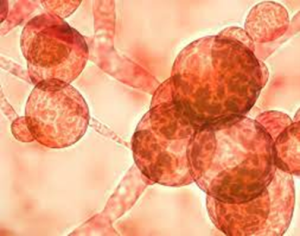Please click the frequently asked questions below for further information and IPC precautions required:
What is Candida auris?
Candida auris is a recently identified species of yeast (a type of fungus) from the Candida genus. Most Candida species are harmless commensals, however they can be invasive and cause disease, known as candidiasis.
C. auris was first identified in 2009 and has been associated with prolonged outbreaks in healthcare settings as it is highly transmissible between patients and from contaminated environments. It can cause a wide range of infections, including blood stream infections (candidaemia), pericarditis, urinary tract infections (UTIs) and pneumonia. It is hard to identify with standard laboratory methods and is multi-drug resistant making diagnosis and treatment difficult.
C. auris mainly affects critically unwell patients in high dependency or intensive care settings. Those with severe underlying co-morbidities and immunosuppression, including those with diabetes, chronic kidney disease, malignancies and Human Immunodeficiency Virus (HIV) are most at-risk.

How does it spread?
It is a Contact Spread organism.
Transmission is possible from contact with colonised environmental sources or the skin of colonised individuals.
What are the symptoms of Candida auris?
C. auris has caused bloodstream infections, wound infections, and ear infections. It also has been isolated from respiratory and urine specimens, but it is unclear if it causes infections in the lung or bladder.
Why is this important?
If NIAS staff are aware that the patient has a suspected or confirmed case this should be communicated to the Control Room (Emergency or Non-emergency as appropriate) and the staff in the receiving unit when transferring the patient to ensure effective patient care and management.
IPC Precautions
- Standard Precautions should be used.
- Contact precautions should be used for Neonates.
- Hand Hygiene should be completed as per the 5 moments in line with usual practice.
- Eye protection should be risk assessed for any concern regarding a splash risk.
- Gloves and Aprons should be risk assessed.
- Laundry should be treated as per usual policy.
What cleaning is required?
All equipment and the ambulance should have an in-between patient clean paying particular attention to touch points.
Do staff need prophylaxis or follow up?
No staff follow up required.
